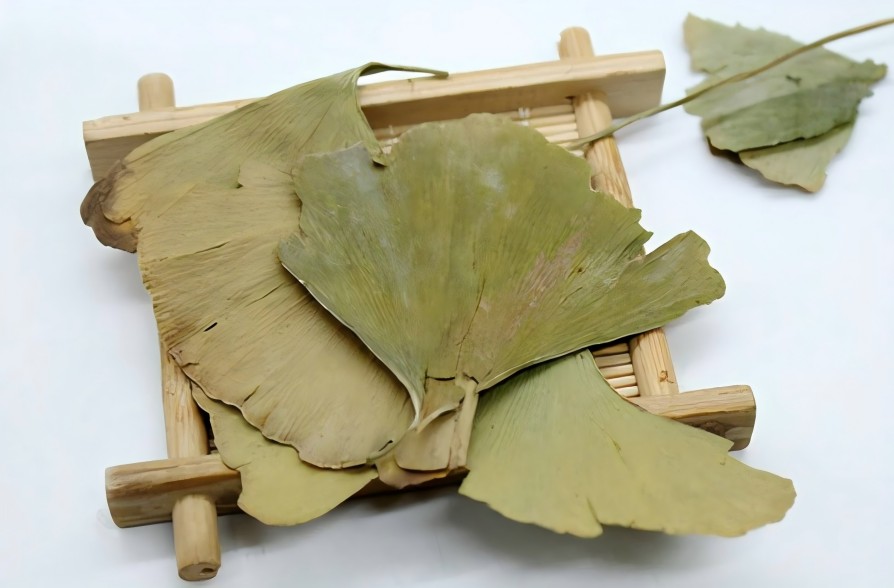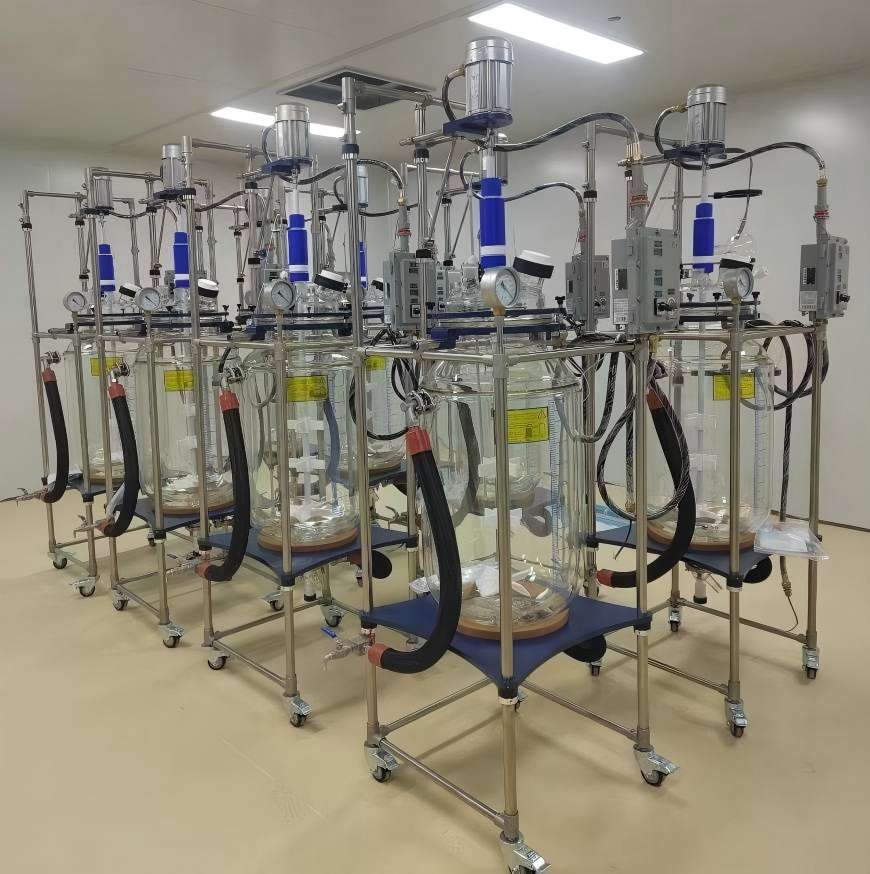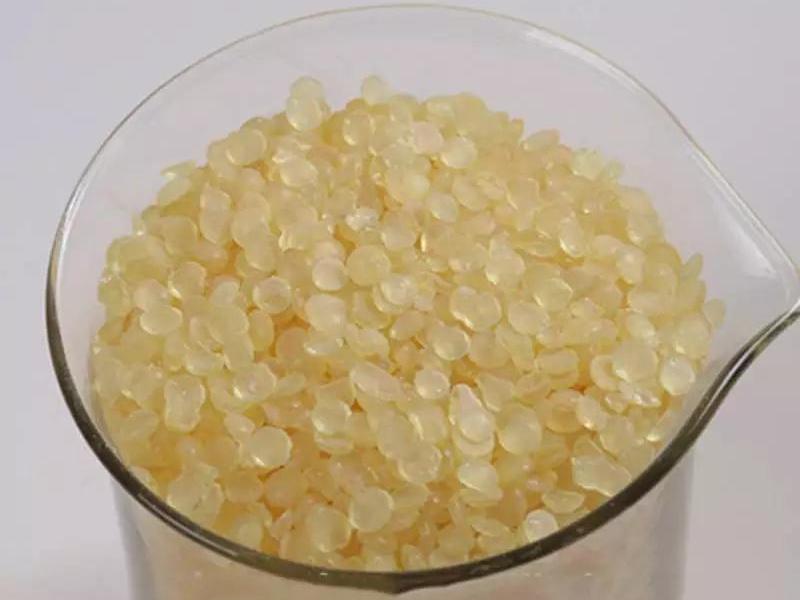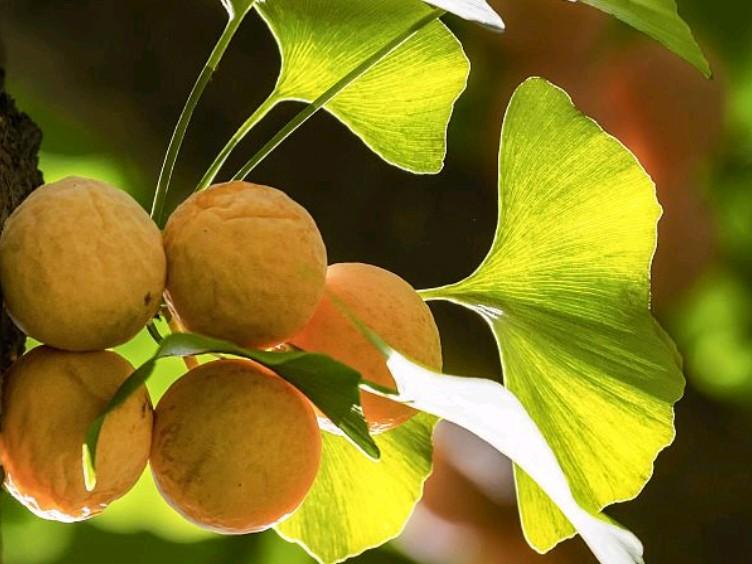How to Extract and Purify Ginkgo Flavone?
China is rich in plant resources. Extracting and purifying the rhizomes and leaves of natural plants can yield compounds with a variety of biological activities, which are of great significance for the development of China's food, pharmaceutical and health product industries. The main active ingredient in ginkgo biloba extract is ginkgo biloba flavonoids, which have a variety of functions, such as scavenging free radicals, anti-oxidation and improving cardiovascular and cerebrovascular circulation. Because it is derived from a natural product and has excellent biological activity, it is widely used in many fields such as cosmetics, health products and medicine. The research on the extraction and functional application of ginkgo biloba flavonoids has always been one of the hotspots in the research of natural products [1]. Many papers have reviewed the research status of ginkgo biloba extracts, such as Xu Fang [1], Chen Xijuan [2], etc. [3] have described the research progress of the chemical structure, pharmacological clinical application, extraction process, etc. However, the generalizations on the purification and refinement, properties and structure-activity relationships of ginkgo biloba flavonoids are not systematic enough.

This paper systematically compares the advantages and disadvantages of ginkgo biloba flavonoid extraction methods, analyzes the current research status of ginkgo biloba flavonoid membrane separation, resin method, and column chromatography separation and purification techniques, and provides an outlook on the development of ginkgo biloba flavonoid extraction and purification techniques.
1 Extraction methods for ginkgo biloba flavonoids
According to the energy supply methods (such as microwave and ultrasound), systems (such as solvents and supercritical fluids) and other auxiliary substances used in the extraction process, the extraction methods of ginkgo biloba flavonoids mainly include solvent extraction, enzyme-assisted methods, microwave methods, ultrasound methods and supercritical fluid methods.
1.1 Solvent extraction
The solvent extraction method is currently the most widely used method for extracting ginkgo biloba flavonoids [4]. Most of the solvents used for extraction in literature reports use a polar ethanol-water system. For example, Xue Zhibin [5] used 70% ethanol as the solvent for extraction at 80 °C for 3.0 h, and the purity of the total flavonoids reached 16.13%. Jia Changying [6] and others found that the influence of ethanol solvent extraction conditions is as follows: ethanol volume fraction > liquid to liquid ratio > extraction time > extraction temperature. The ethanol-water system, as a solvent, has the advantages of low toxicity and easy residue treatment compared to other highly polar solvents such as acetone. Solvent extraction is convenient and easy to operate, but it has disadvantages such as low extraction rate, long operating time, and material waste.
1.2 Enzyme-assisted extraction method
Since the active ingredients in plants are mostly found in the rhizomes and leaves, and the main structural components of the rhizomes and leaves are the three major elements – cellulose, hemicellulose and lignin – all of which are polymeric high-molecular compounds with stable and dense crystalline regions, the tight structure of the three major elements makes it more difficult to extract the active ingredients from plants. The use of mild biological enzyme technology to break down the structure of the three major elements to improve the extraction of active ingredients is a new technology developed in recent years for plant extraction [7].
Ginkgo biloba flavonoids are mostly found in the cells of ginkgo biloba leaves. The main component of the cell wall of ginkgo biloba leaves is cellulose. Using cellulase to destroy the structure of the cell wall allows the flavonoids in the cells to dissolve more easily in solvents [8]. Therefore, the bioenzyme technology has also gradually been used in the purification technology of ginkgo biloba flavonoids. In the purification process, cellulase is used to first degrade the cellulose in the cell wall and release the flavonoids in the cell wall, which can greatly increase the extraction rate of ginkgo biloba flavonoids. Moreover, at the end of the purification, the bioenzyme can be killed by instantaneous temperature rise, etc., and no toxic substances will remain in the target product.
Wu Meilin [9] and others used a cellulase-assisted method to extract total ginkgo biloba flavonoids, which increased the yield of total flavonoids by 18.92% compared to the ethanol extraction method. CHEN Shuo [10] used a cellulase method to extract ginkgo biloba flavonoids, adding maltose as a sugar base to promote the transglycosylation of the flavonoid glycoside group, converting the aglycon to a more polar glycoside, thereby allowing more of the active ingredient to dissolve in the extract. The yield was increased by 102% compared to the same conditions without the enzyme. The enzyme-assisted method can greatly improve the extraction rate, and is environmentally friendly and safe. The resulting extract can be used in food and nutritional supplement applications.

1.3 Microwave-assisted extraction
Microwave-assisted extraction technology has the advantages of fewer by-products, faster speed and higher yield, and has been widely used in the extraction of flavonoids [11,12]. Xu Chunming [13] and others used a microwave-assisted ethanol solvent method to extract total flavonoids from ginkgo leaves, and obtained the optimal extraction conditions: at a temperature of 70 °C, a liquid-to-material ratio of 1:25, an ethanol volume fraction of 70%, a microwave power of 300 W, and a microwave time of 60 s. Under these conditions, the total flavonoid extraction rate can reach 2.698%. However, high microwave temperatures can damage the structure of flavonoids and cause more impurities to dissolve. When the power is high and the temperature is high, the solvent can easily evaporate, causing some pollution. Therefore, the microwave extraction method needs to be further optimized in terms of extraction power and temperature, such as controlling the temperature while maintaining the effect of microwave power.
1.4 Ultrasonic-assisted extraction method
Huo Yinquan [14] used ultrasonic technology to extract ginkgo biloba flavonoids. 70% ethanol was used as the extraction solution, and ultrasonic power was 100 W. The ultrasonic-assisted ethanol extraction was carried out at an extraction time of 50 min and a liquid-to-material ratio of 30:1. the extraction rate of ginkgo biloba flavonoids was 3.51%. GAO Han [15] first performed 21.66 min of ultrasound, followed by 2 h of extraction at 39.34 °C, and the purity of the product flavonoids was 40.62 mg/g. The ultrasonic-assisted solvent extraction method does not require high temperatures and is easy to control [16], but it is prone to the formation of ultrasonic voids and the equipment manufacturing cost is high.
Both ultrasound and microwaves use mesoscale energy waves as energy sources to quickly extract plant active ingredients. Their penetration depth has a significant effect on the extraction of plant materials. Huang Lili [17] explored the influence of scale in the extraction of effective components of ginkgo biloba leaves with the aid of microwaves and ultrasound. The depth of penetration of microwaves and ultrasound was determined through theoretical analysis, and the scale range of the two methods was determined. By comparing the three factors of microwave power density, radiation time and material-liquid ratio, it was found that below 50 ℃, the extraction rate of ultrasound was significantly higher than that of microwave-assisted extraction.
1.5 Supercritical CO2 extraction method
He Kuo [18] used the supercritical CO2 extraction method to obtain an extraction rate of 3.27% and a purity of 64.7%; Han Yuqian [19] and others used the supercritical CO2 extraction method under the same conditions, and the extraction rate of ginkgo biloba flavonoids obtained using ethanol extraction was only 2.56%, with a mass fraction of 27.1%, while the flavonoid extraction rate obtained by the supercritical CO2 method was increased to 3.95%, and the flavonoid mass fraction was increased to 35.28%. The use of supercritical CO2 to extract ginkgo flavonoids can greatly improve the extraction efficiency [20], but due to the high cost of industrial extraction equipment, it is still not suitable for large-scale purification of ginkgo biloba flavonoids.
In addition, other chemicals can be added during the ginkgo biloba flavonoid extraction process to increase the yield. For example, adding a surfactant to the system can increase the solubility and dissolution rate of the active substance and increase the yield of the active substance. However, the residue of the added chemical additive can contaminate the target active product of ginkgo biloba flavonoids and is not widely used.
2 Purification methods for ginkgo biloba flavonoids
The flavonoid content of the ginkgo leaf extract obtained using the extraction method described above is low, and does not meet the corresponding industry standards, especially pharmaceutical standards. Further purification is required to increase the purity of the flavonoids. The most common methods used to purify ginkgo flavonoids are membrane separation, macroporous resin and polyamide resin chromatography.
2.1 Membrane separation
Membrane separation is a relatively mature and stable purification technology, and it has also been used in the study of ginkgo biloba flavonoid purification. XU Zhihong [21] used a homemade PVDF-PVP membrane to refine and purify ginkgo biloba leaf extract, and ultimately increased the flavonoid purity from 21.3% to 34.8%. Because the membrane was prepared using an oxidation method, the pH and pressure of the system have a certain effect on the extraction effect, and an increase in pH will lead to a deterioration in the purification effect.
ZHU Minghang [22] used an ultrafiltration membrane method to purify ginkgo biloba flavonoids and found that an ultrafiltration membrane with a MWCO (10,000 Dalton) had the best effect, increasing the purity of ginkgo flavonoids from 24% to 68% by mass. Temperature was the factor that most affected the purification effect. In contrast, Yan Yanping [23] used a three-step membrane separation technique to purify ginkgo biloba flavonoid crude extract by ultrafiltration, increasing the purity of the flavonoids from 24% to 99.2%. Membrane separation has the advantages of low energy consumption, easy equipment scaling-up, simple process, energy saving and low cost. The resulting product has high purity and is easy to scale up industrially.
2.2 Macroporous resin method
Due to the characteristics of macroporous resin, such as high physical and chemical stability, large adsorption capacity, good selectivity and easy regeneration, research on the further purification of ginkgo leaf extract using macroporous resin has attracted increasing attention. According to the different polarities of flavonoid glycosides and flavonoid aglycones, macroporous resin is widely used to purify flavonoids using ethanol-water solutions of different concentrations. Wu Meilin [24] used AB-8 macroporous adsorption resin at pH = 5, a flow rate of 1.0 mL/min, and 70% ethanol as the eluent to purify the total flavonoids from ginkgo leaves, increasing the purity to 26%. Wu Hao [25] used S-8 macroporous resin to purify crude flavonoid powder, achieving a purity of 48.03%. Ni Lijun [26] found that the content of flavonoids in ginkgo leaves has a significant effect on the purification of ginkgo leaves using macroporous resin.
Three batches of ginkgo leaves with flavonoid contents of 1.0%, 0.8% and 0.6% were selected. It was found that the process parameters for the 0.6% flavonoid content were the most sensitive. The flavonoid content in the extract is positively correlated with the ethanol concentration and the elution volume, and the yield of the extract is negatively correlated with the elution volume. A better purification process for ginkgo biloba flavonoids was obtained. When the flavonoid content in the raw ginkgo biloba is maintained at about 1%, the extract is eluted with 2 times the mass of 15% ethanol to obtain a ginkgo biloba extract that meets the requirements of the Chinese Pharmacopoeia. Sun Shengwu [27] established a comprehensive scoring method based on the characteristic spectrum of flavonoid ginkgo leaf extract and the total flavonol glycoside content for evaluating the quality of ginkgo leaf extract. The ginkgo leaf extract was purified using AB-8 macroporous resin, and eluted with 25% and 75% ethanol successively at a system pH of 5.0. providing new ideas for the evaluation of the quality of ginkgo biloba extract.
2.3 Polyamide resin chromatography
Wang Yonggang [28] used 70% ethanol elution, and after purification and elution with polyamide resin, the purity of the flavonoids could reach 63.8%. ZHANG Jing [29] used polyamide resin purification, and used 30% ethanol elution, which increased the purity of the flavonoids to 55%. Compared with macroporous resin, polyamide resin has stronger selectivity in the purification of ginkgo biloba flavonoids and has a better separation and purification effect. However, as an adsorbent, polyamide resin has a slow elution rate, and small molecular weight polyamides are prone to mildew and mix into the product, resulting in unstable or decreased product quality.
In addition, silica gel column chromatography, ion exchange resins, ionic liquid/salt two-phase systems, and metal complexation-dissociation methods are also commonly used for the purification of ginkgo flavonoids.
3 Prospects
China is rich in plant resources, and the development of plant extraction technology is of great significance for increasing the efficient use of our resources. Global demand for Ginkgo biloba extract is increasing, and there are higher requirements for the purity of Ginkgo biloba flavonoids. At present, there are many extraction and purification technologies for Ginkgo biloba flavonoids [30,31], which can basically meet the needs of the pharmaceutical, food and other industries. In addition, The ability of ginkgo biloba flavonoids to scavenge free radicals is closely related to their phenolic hydroxyl groups, which act as active hydrogen donors. The phenolic hydroxyl groups of ginkgo biloba flavonoids have strong reducing power and are easily oxidized, and they are unstable during extraction, purification and storage [32,33]. In future research, appropriate techniques can be considered, such as reducing the contact between the extract and oxygen in the air or adding antioxidants, to eliminate the effects of structural instability. The application of ginkgo biloba extract in the pharmaceutical industry not only requires that the flavonoid content of ginkgo biloba reach a certain value, but also has strict requirements for other by-products. For example, the content of ginkgoic acid, which has toxic side effects, should be low.

The precise separation and analysis technology of ginkgo biloba extract also deserves further research [34]. With the development of interdisciplinary technological collaboration, the extraction and purification technology of ginkgo biloba flavonoids will gradually improve and be perfected.
References:
[1] Xu Fang, Li Jie, Mao Yu, et al. Research progress of Ginkgo biloba extract [J]. Food Research and Development, 2013, 34(16): 124-127.
[2] Chen Xijuan, Wang Chengzhang, Ye Jianzhong. Research progress on the chemical composition and application of Ginkgo biloba [J]. Biomass Chemical Engineering, 2008, 42(4):57-62.
[3 ] Tao Feng, Li Xiangrong, Zhan Jie. Research progress on extraction and separation methods of flavonol compounds [J]. Traditional Chinese Medicine, 2008, 31(10): 1586-1589.
[4] Yan Gaoying, Zhang Birong, Zhang Min, et al. Research on the extraction process of total flavonoids from ginkgo biloba leaves by water immersion method [J]. Northwest Journal of Pharmacy, 2016, 31(6): 560-562.
[5] Xue Zhibin, Cheng Wei. Optimization of the extraction process of ginkgo biloba flavonoids [J]. Anhui Agricultural Science, 2011, 39(10):5751-5752.
[6 ] Jia Changying, Tang Lihua, Zhang Xiaojuan, et al. Optimization and kinetics study of ethanol extraction process of ginkgo biloba flavonoids [J]. Agricultural Machinery, 2012, 12(36): 90-90.
[7 ] WANG X., WANG Z., CAI M., et al. Synergistic effect of cellulase Umcel9y-1 in the extraction of total flavonoids from ginkgo leaves[J]. Journal of Anhui Agricultural University, 2017, 44(1): 22-26.
[8 ] PURI M., SHARMA D., BARROW C. J. Enzyme-assisted extraction of bioactives from plants[J]. Trends in biotechnology, 2012, 30(1): 37-44.
[9 ] Wu Meilin, Zhou Chunsan, Chen Longsheng, et al. Study on the enzymatic extraction of ginkgo flavonoids [J]. Natural Product Research and Development, 2004, 16(6):557-560.
[10 ]CHEN Shuo, XING Xinhui, HUANG Jianjun, et al. Enzyme-assisted extraction of flavonoids from Ginkgo biloba leaves: Improvement effect of flavonol transglycosylation catalyzed by Penicillium decumbens cellulase[J]. Enzyme and microbial technology, 2011, 48(1): 100-105.
[11 ] Wu Hao, Zong Zhimin, Li Xiuxiu. Study on the process of ultrasonic-microwave synergistic extraction of flavonoids and lactone B from ginkgo leaves, China Brewing, 2016, 35(10): 153-156.
[12 ] Sheng Wei, Teng Jingtong, Xue Jianping, et al. Study on the optimization of ultrasonic-microwave synergistic extraction of total flavonoids from yellow chrysanthemum using response surface methodology [J]. Food Industry Science and Technology, 2015, 36(8): 290-293.
[13 ] Xu Chunming, Wang Yingying, Li Ting, et al. Microwave extraction and bioavailability of total flavonoids from ginkgo leaves [J]. Forest Chemical Industry, 2014, 34(4):131-136.
[14] HUO Yinqiang, YIN Jie, CHEN Xue. Ultrasonic extraction of ginkgo biloba flavonoids and its antibacterial research [J]. Food Industry, 2012 (5):47-49.
[15 ] GAO Han ,LIU Benguo , NAN Haijuan, et al. Optimization of ultrasonic-assisted extraction of flavonoids with ethanol from ginkgo leaves by response surface methodology[C]. ITIME'09. IEEE International Symposium on. IEEE, 2009, 1: 1154-1157.
[16] Fang Lei. Study on the extraction of ginkgo biloba flavonoids with ultrasonic assistance and in vitro anti-exercise oxidation [J]. Food Research and Development, 2016, 37(17): 153-157.
[17 ] Huang Lili, Wang Liangfeng, Cui Zhengwei. Comparative study on microwave and ultrasonic assisted extraction of ginkgo flavonoids at mesoscale [J]. Food Science and Technology, 2017, 5: 188-193.
[18 ] He Kuo. Study on the process of supercritical CO2 extraction of ginkgo flavonoids [D]. Xihua University, 2006.
[19] Han Yuqian, Sui Xiao. Research on the extraction process of active ingredients from ginkgo leaves [J]. Fine Chemicals, 2000, (9): 505-506.
[20 ] Liu Wen, Li Sujuan, Ma Danfeng. Entrainment process conditions for the extraction of total flavonol glycosides from ginkgo biloba leaves by supercritical CO2 [J]. Chinese Journal of Modern Medicine, 2017, 27(3): 41-44.
[21 ] XU Zhihong, LI Lei, Wu Fawen, et al. The application of the modified PVDF ultrafiltration membranes in further purification of Ginkgo biloba extraction[J]. Journal of membrane science, 2005, 255(1): 125-131.
[22 ] ZHU Minghang, YUN Yanbin, XIANG Wenyi. Purification of Ginkgo biloba flavonoids by UF membrane technology[J].
Desalination and Water Treatment, 2013, 51(19-21): 3847-3853.
[23 ] Nian Yanbing. A method for purifying ginkgo flavonoids using membrane separation. China, 102302522A(P). 2012-01-04.
[24] Wu Meilin, Zhou Chunsan, Zhong Shian, et al. Process research on purification of ginkgo active compounds using macroporous adsorption resin [J]. Zhongnan Pharmacy, 2005, 3(2): 75-77.
[25] [25]Wu Hao, Zong Zhimin, Shi Jinlong. Process research on the separation and purification of ginkgo flavonoids using S-8 macroporous adsorption resin [J]. Food Science and Technology, 2013(4):224-227.
[26] Ni Lijun, Yan Weitao, Zhang Liguo. Study on the effect of ginkgo biloba flavonoid content on the purification process conditions of ginkgo biloba extract by macroporous resin [J]. Natural Product Research and Development, 2017, 12:2097-2103.
[27] Sun Shengbin, Ding Yanpu, Feng Yukang, et al. Optimization of the preparation process of ginkgo biloba extract using AB-8 macroporous resin based on flavonoid characteristic chromatograms and total flavonoid glycoside content [J]. Chinese Journal of Traditional Chinese Medicine, 2017, 5:1134-1138.
[28] WANG Yonggang. Preparation process and quality research of the active part of ginkgo total ketone ester [D]. Shandong University, 2010.
[29] ZHANG Jing, KHIZAR Hayat, ZHANG Xiaoming, et al. Separation and purification of flavonoid from ginkgo extract by polyamide resin [J]. Separation Science and Technology, 2010, 45(16): 2413-2419.
[30] Li Baotong, Xu Yongxia, Li Juan, et al. Study on the extraction of total flavonoids from ginkgo leaves by cellulase-microwave assisted extraction and its antioxidant properties [J]. Modern Chemical Industry, 2016 (3): 67-70.
[31] Jin Hua, Zhong Fangli, Li Xiuping, et al. Study on the decolorization process of apricot leaf flavonoids by activated carbon [J]. Food Research and Development, 2017, 38(8): 85-88.
[32]Zhang Guanghui, Meng Qinghua, Long Xu, et al. Optimization of ultrasonic-assisted extraction of flavonoids from ginkgo biloba leaves by response surface methodology and its anti-free radical activity [J]. Modern Chemical Industry, 2018(1): 17-19.
[33] Xu Y, Wang H, Wang G, et al. Effect of temperature and light intensity on the synthesis of ginkgo biloba flavonoids. Journal of Central South University of Forestry and Technology, 2016, 36(4): 30-34.
[34] Yao Xin, Xue Ping, Yu Danhong, et al. Determination of five trace ginkgo acids in ginkgo biloba extract by UPLC-MS/MS [J]. Chinese Journal of Experimental Pharmacology, 2017, 18: 174-179.


 English
English French
French Spanish
Spanish Russian
Russian Korean
Korean Japanese
Japanese







